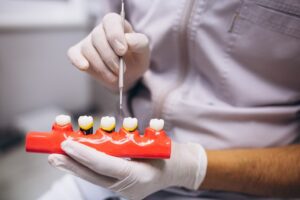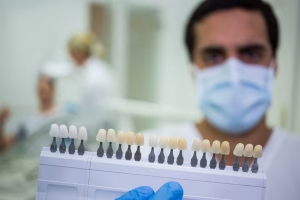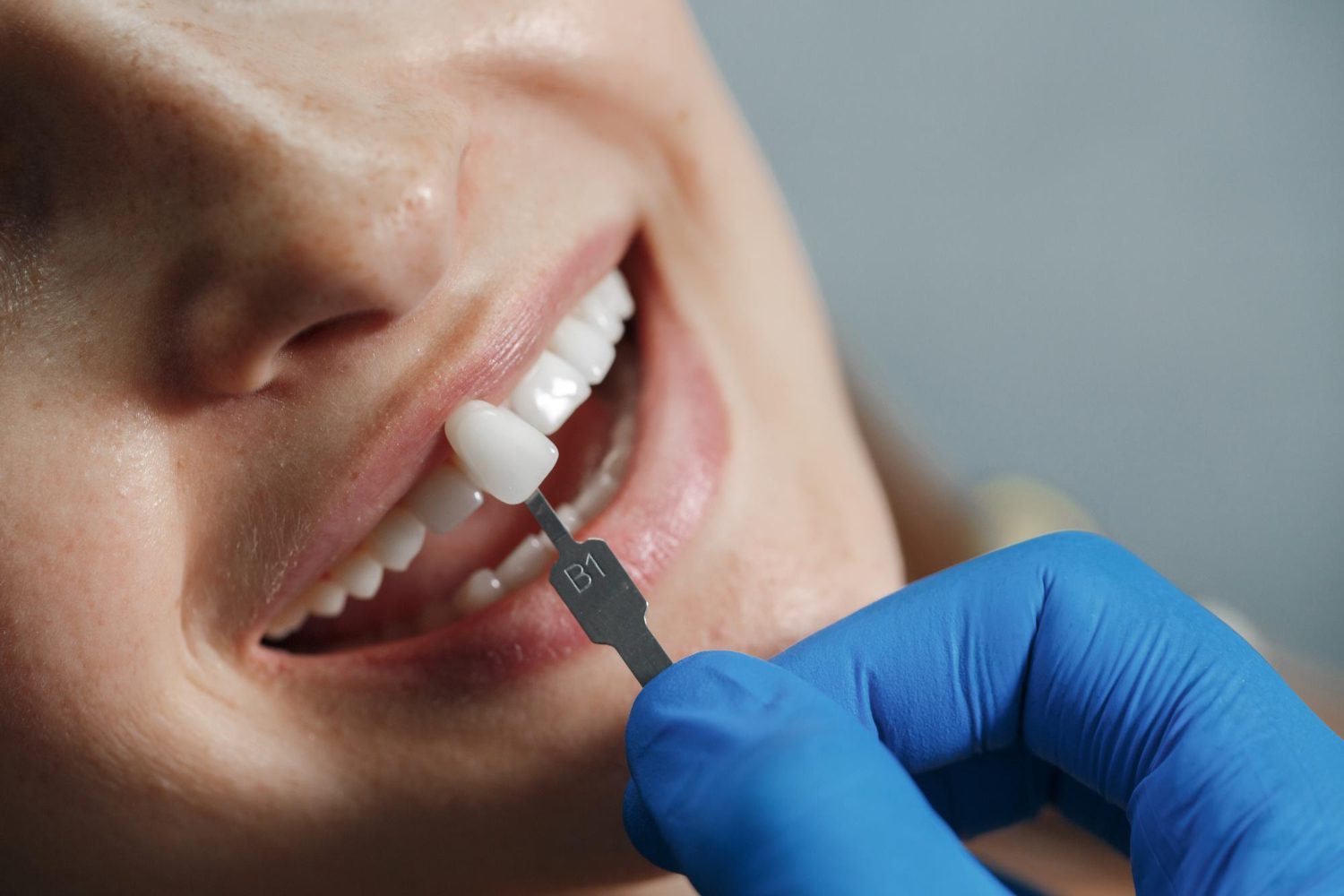For many Australians weighing up their options for tooth replacement, appearance ranks alongside function. Zirconia implants—ceramic fixtures made from yttria-stabilised zirconium dioxide—offer a metal-free path to a natural-looking smile without compromising everyday use. This article outlines why zirconia appeals from an aesthetic standpoint, what the evidence shows, and where it pays to be selective.
Why colour and tissue response matter
Two issues often dictate how an implant looks once restored: the colour of the underlying components and the way the surrounding gum behaves. Titanium has a long clinical track record, yet its grey tone can sometimes show through thin or delicate gingiva, especially at the front of the mouth.
Zirconia’s tooth-like shade and translucency make that shine-through less likely, which is why ceramic abutments and implants are widely considered in visible areas. Reviews of soft-tissue behaviour around zirconia report favourable outcomes, including lower plaque build-up and reduced inflammatory markers at the gum margin—both of which support stable pink aesthetics.
A smoother surface for cleaner lines
Plaque control is not only about hygiene habits; material properties count. Multiple studies indicate that zirconia tends to accumulate less bacterial biofilm than titanium abutments under comparable conditions. Less plaque typically means calmer tissues, less redness, and a contour that mimics a healthy tooth emergence profile—subtle points that make a smile read as “real” rather than “restored”.
Metal-free confidence for sensitive patients

True titanium allergy is uncommon, and most people tolerate metal implants well. That said, documented cases of hypersensitivity and soft-tissue reactions exist in the medical and dental literature. For patients anxious about metals or with a strong history of contact allergies, a ceramic, metal-free alternative can provide reassurance without looking like a compromise. Current reviews describe hypersensitivity to titanium as rare yet possibly under-recognised; a careful clinical history and, when indicated, allergy testing remain prudent.
Thermal comfort and colour stability
Beyond colour matching, everyday comfort contributes to the overall impression. Zirconia conducts heat and cold poorly compared with metals, so hot coffee or ice-cold water is less likely to transmit temperature changes through the implant–abutment complex. Chemically, zirconia is stable in the oral environment and doesn’t corrode, which helps maintain the long-term shade of the soft tissues and the restoration margins. These material traits quietly support a consistent aesthetic over time.
Strength where it counts—used wisely
Zirconia is a high-strength ceramic with excellent fracture toughness for a non-metal. Even so, it behaves differently to titanium under heavy load or bending. Recent analyses suggest titanium implants still edge zirconia on survival and marginal bone stability in short-term comparisons, while broader reviews describe zirconia outcomes as promising but less extensively documented over the long haul. For front teeth and bicuspids—sites that demand top-tier cosmetics and face moderate forces—zirconia can be a smart choice. In high-load molar sites or in patients who grind, case selection and prosthetic design require particular care.
One-piece vs two-piece: aesthetic implications
Ceramic implants come in one-piece and two-piece designs. One-piece systems remove the abutment junction, potentially reducing a visible micro-gap at the gum line and simplifying the emergence profile. Early five-year data for these configurations are encouraging. Two-piece systems, meanwhile, can improve restorative flexibility—useful when angulation must be fine-tuned to achieve ideal crown contours. Your clinician will weigh these factors against the aesthetic demands of the site.
Patient-centred outcomes
Beauty is not only what clinicians see. Patient-reported measures increasingly highlight satisfaction with the look and feel of zirconia-based reconstructions, driven by gum health and the absence of any dark hue near the margins. While more long-term, high-quality trials are welcome, existing syntheses point to strong acceptance where aesthetics are a priority.
How zirconia supports a natural smile
- Gum colour harmony: The white core reduces the risk of a grey cast beneath thin tissues.
- Healthy margins: Lower plaque affinity can support pink, stippled gleeding.
- Stable shade over time: No corrosion products to discolour nearby tissues.
- Comfort in daily life: Low thermal conductivity limits sudden temperature sensations.
Also Read: Popular Types of Dental Implants You Need to Know
Points to discuss with your dentist
Zirconia’s aesthetic upside is clear, yet the best results still come from thoughtful planning. Discuss gum thickness, smile line, bite forces, and any history of clenching. Clarify whether a one-piece or two-piece path suits your case, and how provisional restorations will shape the soft tissue to create symmetrical papillae and a lifelike emergence profile. Where heavy load is expected, your dentist may recommend titanium for the fixture with a ceramic abutment and crown to blend strength with appearance.
If you’re comparing options locally, experienced providers in dental implants Sydney often offer both materials and can tailor the plan to the site and your goals. For patients specifically interested in a fully ceramic pathway, clinics providing zirconia dental implants Sydney solutions can outline candidacy, timelines, and maintenance.
Care and maintenance for lasting aesthetics

A beautiful outcome still relies on simple habits. Use a soft brush and interdental aids recommended for implants. Keep up with professional cleanings—ceramic or not, biofilm control protects the margin shape and prevents redness that draws the eye. If you grind, a night guard protects both the crown and the opposing teeth, preserving the crisp contours your clinician created.
The bottom line
Zirconia implants bring a natural colour, favourable soft-tissue response, and confidence for those seeking a metal-free option—qualities that matter when the goal is a smile that looks untouched. Evidence to date supports their aesthetic strengths, with ongoing research clarifying long-term performance and site selection. A candid discussion with your implant dentist will help match the material to your anatomy, bite, and cosmetic aims so your restoration looks good not just on day one, but for years to come.

